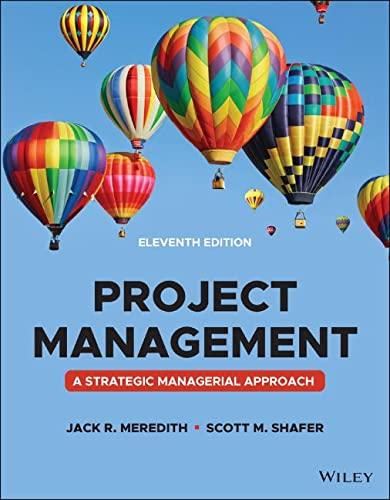Question
plan for organisational change use your own organisation. Identify the need for change. Make sure that the reasons for the change effort are clearly defined.
plan for organisational change
use your own organisation.
Identify the need for change. Make sure that the reasons for the change effort are clearly defined. When your stakeholders have a clear understanding of why the change is needed and how it will improve business or the way they work, they are more likely to support rather than resist the change. Be clear on your role in the change too.
Set the strategy and justify it. Consider your guiding policy or principles. This is the framework for how decisions will be made during the change. Remember to add evidence in your plan to justify your strategy.
Determine the scope of the change. The next step in writing your plan is determining who (e.g. stakeholders) the change will affect and how (e.g. ethical consequences). Also determine what the change will impact. Things to consider may include cultural relationships, policies, processes, job roles, group performance and organisational structure.
Clarify the expected benefits. These benefits should be clearly delineated so that everyone involved understands the advantages of proceeding with the change.
Develop and articulate the roadmap. This is the end-to-end overview for change, including deliverables and milestones that need to be delivered to support the change. Establishing well-communicated and achievable milestones is vital to the success of any change plan.
Create a change communication plan. The right strategic communications can help maintain employee focus and foster trusteven in the most uncertain times. Focus on helping employees across the organisation understand the benefits of the change. Create opportunities for employees to ask questions, and let them know what information you can share, what information you can't share and when they can expect further updates.
Step 8: Create a change resistance plan. How you manage resistance is a critical element when managing change. After identifying the stakeholders, you should examine how they will each be affected by the change, including any ethical and social consequences. It's important not only to identify stakeholders but also to predict how they will respond to the change. Often stakeholders will respond by resisting change, so creating a resistance management plan is important.
Step 9: Summarise your plan in a conclusion. The conclusion should reaffirm your strategy and briefly summarise your plan, along with any key points. A solid conclusion paragraph is typically 3-5 sentences. This should give you enough time to succinctly review your main themes and major concepts while not being too brief. Your conclusion is the last thing your reader will remember about your plan.Your plan will diagnose the need for change, set a guiding policy to address the problem, consider the impact and consequences of the strategy, and propose a set of coherent actions to deliver the policy and provide justification. You will also need to outline your role and contribution to the change, noting that communicating that change is coming is not enough. You need to explain WHY the change is important and what benefits may be expected from it, as well as any anticipated setbacks.
A change plan typically contains: The reason for change,A guiding policy or principles, The scope and impact of change, Benefits and advantages, A roadmap, including key milestones,A communication plan,A resistance plan and Conclusions
Step by Step Solution
There are 3 Steps involved in it
Step: 1

Get Instant Access to Expert-Tailored Solutions
See step-by-step solutions with expert insights and AI powered tools for academic success
Step: 2

Step: 3

Ace Your Homework with AI
Get the answers you need in no time with our AI-driven, step-by-step assistance
Get Started


